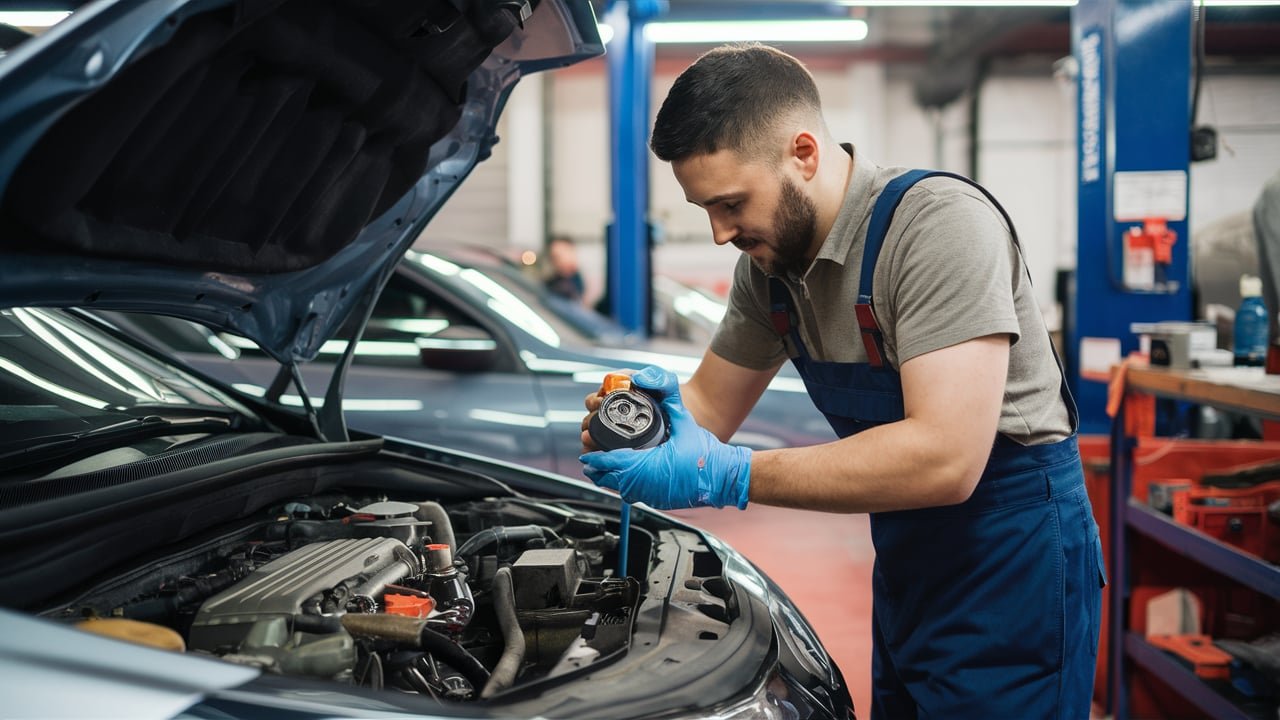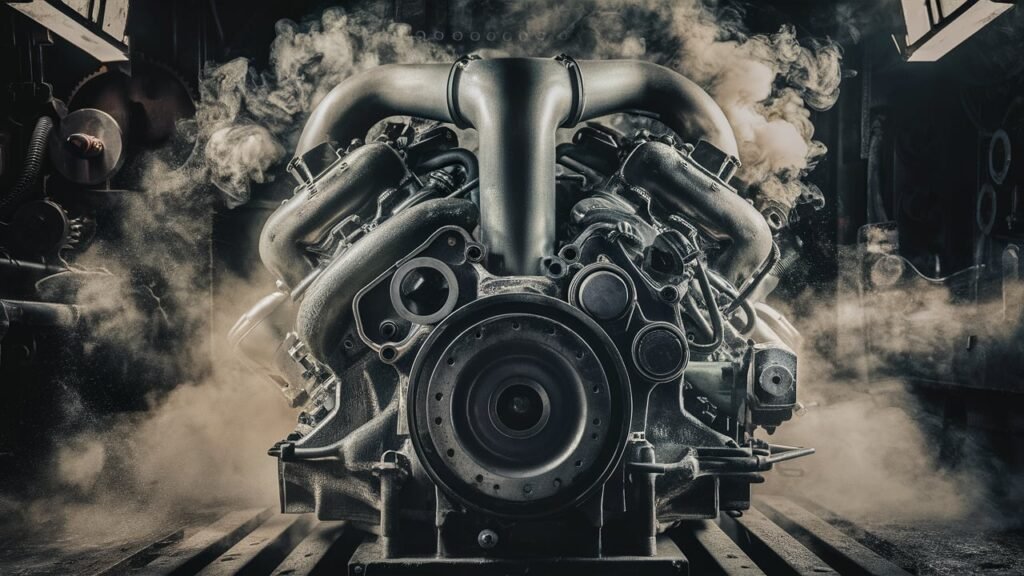
Demystifying Car Engine Thermostats: What You Need to Know
Car engines are complex systems where precision is paramount, and one crucial component that plays a pivotal role in maintaining optimal performance is the thermostat. Often overlooked yet indispensable, a car engine thermostat serves as the gatekeeper of temperature regulation within the engine.
Understanding the intricate mechanisms behind how thermostats operate is not merely a matter of knowledge but a necessity for anyone looking to delve deeper into automotive functionality.
To navigate the labyrinth of car engine thermostats effectively, it is imperative to grasp their purpose beyond surface-level indications. Delving into this essential element unveils a world where temperature control isn’t just routine but an art guided by engineering precision.
With every movement and adjustment, these unassuming devices wield immense influence over the engine’s efficiency and longevity. By unraveling the mysteries wrapped around these seemingly mundane components, enthusiasts and engineers alike unlock a realm where technical prowess meets mechanical finesse to orchestrate seamless automotive performance.
Understanding Car Engine Thermostats.
A car engine thermostat serves as a crucial component in regulating the operating temperature of the engine. Its primary function is to manage the flow of coolant through the engine to ensure it operates within an optimal temperature range.
By controlling when and how much coolant enters the engine, the thermostat plays a vital role in preventing overheating or inefficient cooling processes. Understanding this mechanism is essential for maintaining proper engine function and longevity.
The thermostat system in a car consists of several key components working together seamlessly. These components include the thermostat itself, housing, gasket, and sensors. The thermostat is typically located between the engine and radiator to monitor coolant temperature effectively.

When the coolant reaches a certain temperature, the thermostat opens or closes to regulate its flow, allowing for efficient heat dissipation from the engine. This dynamic process ensures that the engine operates at an ideal temperature for performance and durability.
In operation, as the engine heats up during normal driving conditions, the thermostat detects this change and reacts by opening to allow coolant circulation. Conversely, when the engine cools down, especially during idle periods or after shutdowns, the thermostat closes off to retain heat within the system.
This cycle maintains consistent temperatures within acceptable limits for optimal performance and fuel efficiency. A malfunctioning thermostat can lead to issues like poor engine performance, reduced fuel economy, or even potential damage due to overheating if not addressed promptly.
Types of Car Engine Thermostats.
Car engine thermostats come in various types, each tailored to suit different vehicle requirements. The most common type is the wax pellet thermostat—utilizing a wax-filled element that expands and contracts with temperature changes to regulate coolant flow.
This design ensures a gradual opening of the thermostat, allowing for precise control over the engine’s operating temperature. On the other hand, digital thermostats are becoming increasingly popular due to their electronic sensors and programmable features. These advanced thermostats can adjust coolant flow rates rapidly based on real-time data, optimizing engine performance.
In addition to traditional wax pellet and digital thermostats, some vehicles employ bypass thermostats in their cooling systems. Bypass thermostats include an additional valve that redirects coolant flow when the main thermostat is closed.

This mechanism ensures continuous circulation of coolant through the engine even during warm-up stages or when minimal cooling is required. Variants like modulating thermostats provide incremental adjustments to coolant flow rather than abrupt on/off functions seen in conventional designs. By precisely modulating coolant flow based on engine conditions, these thermostats enhance fuel efficiency and reduce emissions.
The evolution of thermostat technologies highlights significant advancements from traditional models to modern variants. As vehicles adopt smart technologies, some manufacturers integrate electronically controlled variable geometry thermostats into their engines.
These sophisticated units utilize electromechanical components to adjust coolant flow dynamically depending on driving conditions and engine load. Furthermore, with the shift towards electric vehicles (EVs), there is a growing trend in using electrically heated coolants managed by intelligent electronic controls instead of traditional mechanical thermostats.
Such innovations exemplify how automotive engineering continues to refine thermostat functionalities for improved efficiency and performance in modern automobiles.
Common Issues with Car Engine Thermostats.
Car engine thermostats, while crucial for regulating temperatures in vehicles, can encounter a range of common issues that affect their performance and the overall functioning of the engine. One prevalent problem is thermostat sticking.
This occurs when the thermostat fails to open or close properly due to debris or corrosion buildup, leading to erratic temperature readings on the dashboard and potential overheating. Another issue often seen is thermostat leakage, which may result from a damaged seal or gasket, causing coolant to leak and improper temperature control within the engine.
To address these problems effectively, diagnosing thermostat-related issues early is key. One practical troubleshooting tip is conducting a visual inspection of the thermostat housing and connections for any signs of leaks or damage.

Additionally, using an infrared thermometer to monitor temperature differentials across various parts of the cooling system can help pinpoint potential thermostat malfunctions. By systematically testing each component’s functionality within the cooling system, from sensors to hoses, one can narrow down issues specific to the thermostat.
In terms of preventive maintenance practices, regular coolant checks are paramount for extending the lifespan of car engine thermostats. Ensuring that coolant levels are adequate and that it is clean without contaminants helps maintain proper functioning temperatures within the engine block.
Flushing the cooling system at recommended intervals per manufacturer guidelines also prevents sediment buildup that could impede thermostat operations over time. These proactive measures not only enhance thermostat longevity but also contribute to overall engine health and performance efficiency.
Replacing a Car Engine Thermostat.
When it comes to replacing a car engine thermostat, following a systematic approach is crucial for ensuring your vehicle’s optimal performance. To begin with, gather the necessary tools before embarking on this task.
A typical toolkit may include items like a socket wrench set, screwdrivers, pliers, and a drain pan to collect any coolant that may leak during the process. Having these tools handy will streamline the thermostat replacement procedure.
Next, when removing the old thermostat, make sure the engine is completely cool to avoid burns from hot components. Begin by locating the thermostat housing, usually situated near the engine block or cylinder head and connected to the cooling system hoses. Carefully detach the housing and take note of how everything is assembled; this will aid in correctly installing the new thermostat later on.
Once you’ve removed the old part, clean any residual gasket material from both surfaces where the thermostat fits. This step ensures a proper seal and prevents leaks post-replacement. When installing a new thermostat, ensure it’s placed in the correct orientation—some thermostats have specific positioning requirements.
Tighten bolts or screws securely but avoid over-tightening as it can damage components. Finally, refill coolant as needed and check for any leaks after starting up your vehicle to confirm that the replacement was successful.
By adhering to these step-by-step instructions and exercising caution throughout each stage of the replacement process, you can effectively swap out your car engine thermostat without unnecessary complications. Remember that precision and attention to detail are key when handling such intricate components within your vehicle’s cooling system to maintain its reliability and functionality over time.
Maintaining Optimal Performance.
To maintain optimal performance of your car’s engine thermostat, regular checks and inspections are crucial. Periodically inspect the thermostat for any signs of wear or corrosion that could affect its functionality.
Look out for leaks, cracks, or any buildup around the thermostat housing that may indicate potential issues. By catching these problems early on, you can prevent major malfunctions within the cooling system.
In addition to visual inspections, it is advisable to test the thermostat periodically to ensure proper operation. One common method is to test the opening and closing temperature of the thermostat using a thermometer and a container of hot water.

This simple test can reveal if the thermostat is functioning within the specified temperature range. It’s also important to monitor your vehicle’s coolant levels regularly and top up as needed to prevent overheating due to insufficient coolant.
For optimal performance and longevity of your car’s cooling system, adopting best practices can go a long way. Ensure that you use the manufacturer-recommended coolant type and replace it according to the maintenance schedule outlined in your vehicle manual.
Properly maintaining other components like the radiator, water pump, and hoses will complement the efficiency of your thermostat. Following these practices will help keep your cooling system running smoothly and prevent unexpected breakdowns on the road.
By staying proactive with maintenance routines and staying vigilant for any warning signs of thermostat issues, you can extend the lifespan of your car’s engine thermostat and maintain peak performance from your vehicle’s cooling system.
Remember that neglecting even minor issues can lead to more significant problems down the line, so investing time in keeping your car’s thermostat in top condition will pay off in terms of reliability and overall vehicle health.
Conclusion.
In closing, a comprehensive understanding of car engine thermostats is crucial for mechanics, enthusiasts, engineers, and DIY car owners alike. The intricate role that a thermostat plays in regulating the engine’s temperature directly impacts the overall performance and longevity of a vehicle.
By demystifying the complexities of thermostat systems, individuals can proactively diagnose issues, perform necessary maintenance tasks, and optimize their vehicles’ cooling mechanisms.
As technology advances in automotive engineering, the evolution of car engine thermostats continues to offer improved efficiency and precision in temperature regulation. By recognizing the nuances between traditional and modern thermostat technologies, individuals can make informed decisions when it comes to selecting the most suitable option for their vehicles.
Remembering that regular checks and upkeep are key to ensuring optimal thermostat performance, users can uphold the reliability and functionality of their cooling systems. This knowledge equips individuals with the tools needed to navigate thermostat-related challenges confidently and keep their cars running smoothly on the road ahead.




